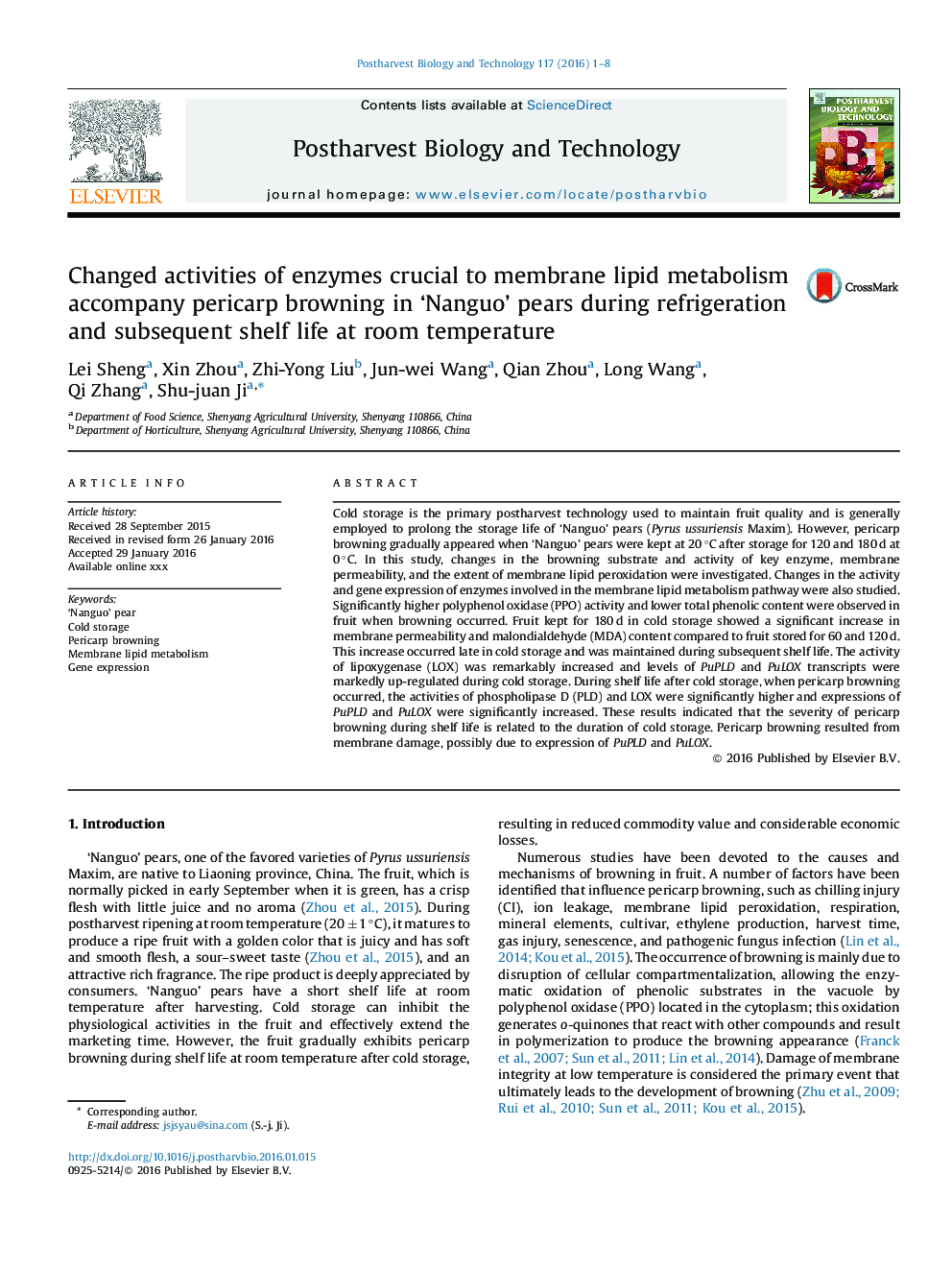| Article ID | Journal | Published Year | Pages | File Type |
|---|---|---|---|---|
| 6378565 | Postharvest Biology and Technology | 2016 | 8 Pages |
Abstract
Cold storage is the primary postharvest technology used to maintain fruit quality and is generally employed to prolong the storage life of 'Nanguo' pears (Pyrus ussuriensis Maxim). However, pericarp browning gradually appeared when 'Nanguo' pears were kept at 20 °C after storage for 120 and 180 d at 0 °C. In this study, changes in the browning substrate and activity of key enzyme, membrane permeability, and the extent of membrane lipid peroxidation were investigated. Changes in the activity and gene expression of enzymes involved in the membrane lipid metabolism pathway were also studied. Significantly higher polyphenol oxidase (PPO) activity and lower total phenolic content were observed in fruit when browning occurred. Fruit kept for 180 d in cold storage showed a significant increase in membrane permeability and malondialdehyde (MDA) content compared to fruit stored for 60 and 120 d. This increase occurred late in cold storage and was maintained during subsequent shelf life. The activity of lipoxygenase (LOX) was remarkably increased and levels of PuPLD and PuLOX transcripts were markedly up-regulated during cold storage. During shelf life after cold storage, when pericarp browning occurred, the activities of phospholipase D (PLD) and LOX were significantly higher and expressions of PuPLD and PuLOX were significantly increased. These results indicated that the severity of pericarp browning during shelf life is related to the duration of cold storage. Pericarp browning resulted from membrane damage, possibly due to expression of PuPLD and PuLOX.
Related Topics
Life Sciences
Agricultural and Biological Sciences
Agronomy and Crop Science
Authors
Lei Sheng, Xin Zhou, Zhi-Yong Liu, Jun-wei Wang, Qian Zhou, Long Wang, Qi Zhang, Shu-juan Ji,
